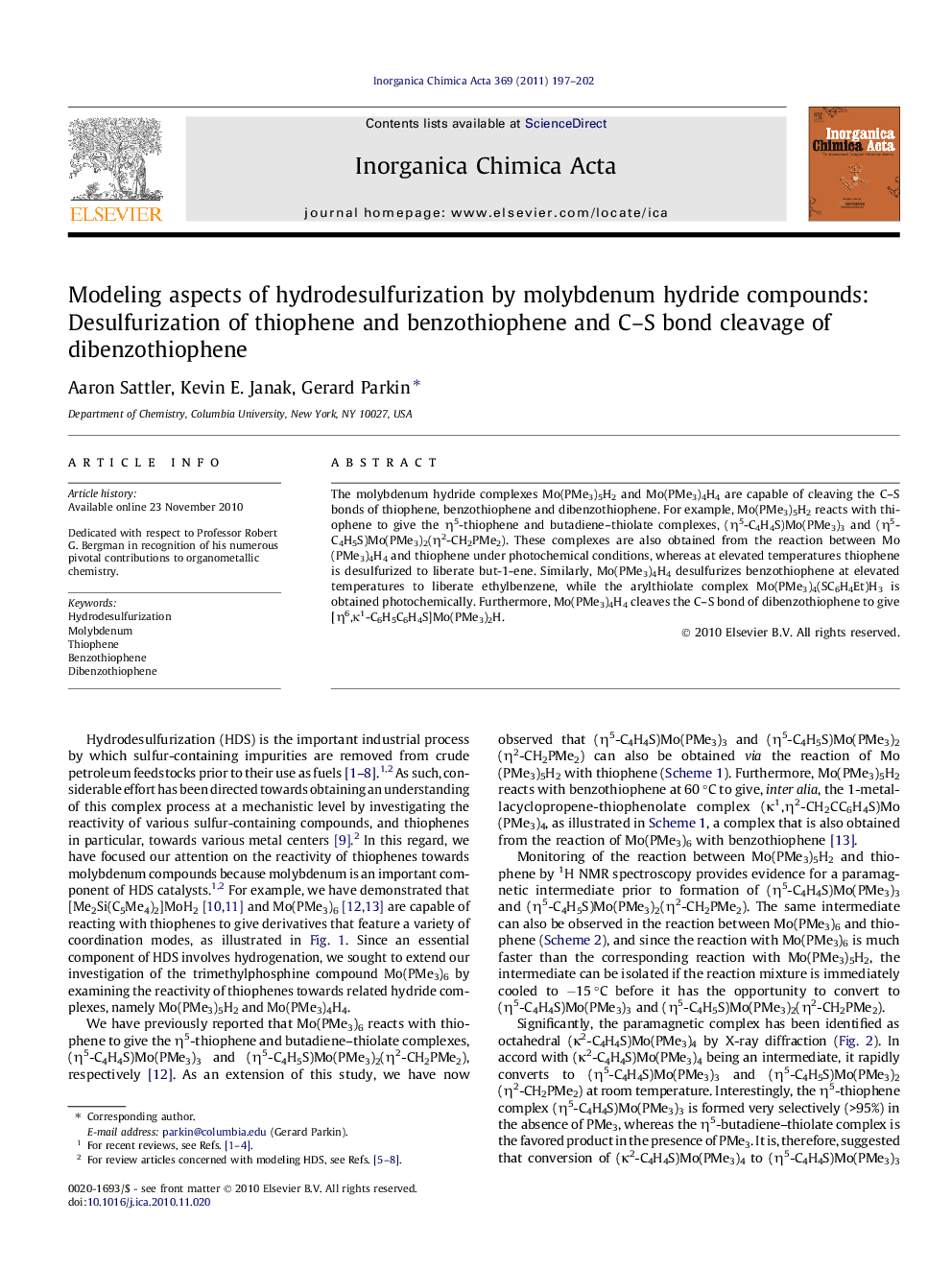| Article ID | Journal | Published Year | Pages | File Type |
|---|---|---|---|---|
| 1307679 | Inorganica Chimica Acta | 2011 | 6 Pages |
The molybdenum hydride complexes Mo(PMe3)5H2 and Mo(PMe3)4H4 are capable of cleaving the C–S bonds of thiophene, benzothiophene and dibenzothiophene. For example, Mo(PMe3)5H2 reacts with thiophene to give the η5-thiophene and butadiene–thiolate complexes, (η5-C4H4S)Mo(PMe3)3 and (η5-C4H5S)Mo(PMe3)2(η2-CH2PMe2). These complexes are also obtained from the reaction between Mo(PMe3)4H4 and thiophene under photochemical conditions, whereas at elevated temperatures thiophene is desulfurized to liberate but-1-ene. Similarly, Mo(PMe3)4H4 desulfurizes benzothiophene at elevated temperatures to liberate ethylbenzene, while the arylthiolate complex Mo(PMe3)4(SC6H4Et)H3 is obtained photochemically. Furthermore, Mo(PMe3)4H4 cleaves the C–S bond of dibenzothiophene to give [η6,κ1-C6H5C6H4S]Mo(PMe3)2H.
Graphical abstractThe molybdenum hydride complexes Mo(PMe3)5H2 and Mo(PMe3)4H4 are capable of cleaving the C–S bonds of thiophene, benzothiophene and dibenzothiophene. For example, Mo(PMe3)5H2 reacts with thiophene to give the η5-thiophene and butadiene–thiolate complexes, (η5-C4H4S)Mo(PMe3)3 and (η5-C4H5S)Mo(PMe3)2(η2-CH2PMe2).Figure optionsDownload full-size imageDownload as PowerPoint slideResearch highlights► Mo(PMe3)5H2 and Mo(PMe3)4H4 are capable of cleaving the C–S bonds of thiophenes. ► Mo(PMe3)5H2 reacts with thiophene to give the η5-thiophene and butadiene–thiolate complexes. ► Mo(PMe3)4H4 desulfurizes thiophene at elevated temperatures to liberate but-1-ene. ► Mo(PMe3)4H4 desulfurizes benzothiophene at elevated temperatures to liberate ethylbenzene. ► Mo(PMe3)4H4 cleaves the C–S bond of dibenzothiophene to give [η6,κ1-C6H5C6H4S]Mo(PMe3)2H.
